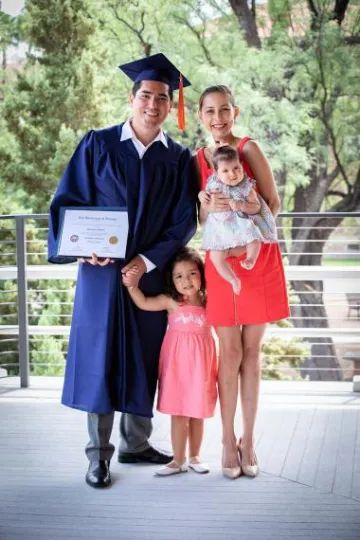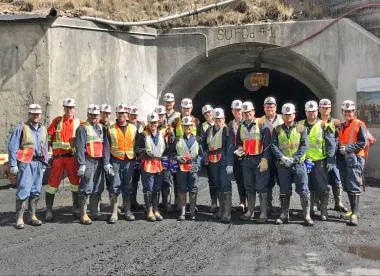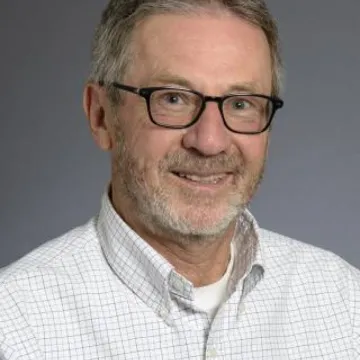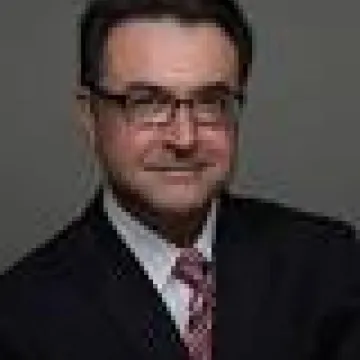
Roberto Olivera and his family celebrate the completion of the Mining 360 certificate course
Tucson, August 2020
Caterpillar Inc. employee Roberto Olivera is an engineer of mechatronics by training. He learned the trade of mining on the job when he joined a company that eventually became part of Caterpillar, the global mining-equipment giant.
Olivera got the chance to solidify all the pieces of his mining knowledge in a special certificate course developed by the University of Arizona’s Department of Mining and Geological Engineering (MGE) and Caterpillar’s Surface Mining & Technology Division, headquartered in Tucson.
Now, Hexagon’s Mining Division, also located in Tucson, is working with MGE to offer a similar mining professional development program for its employees. Starting this fall, its Mining 4.E will provide an overall look at how mining works and the technology that Hexagon develops to make it happen.
This partnership between the companies and UArizona has created two mining professional development models that other firms could replicate for their own workforces.
Hexagon wants employees to be mine-focused
After seeing what Caterpillar and the UArizona developed, Hexagon wanted something similar for its workers, said John Kemeny, professor of mining and geological engineering. He sold a company to Hexagon a year ago. Many come from technical, sales and administrative fields that aren’t focused on mining.
“In talking with Hexagon mining President Nick Hare, the idea was that every new employee of Hexagon would take some kind of a course to learn about mining,” Kemeny said. “It was the same kind of vision as Caterpillar to have all kinds of people working at a company like Hexagon have this depth of knowledge.”
The result is Mining 4.E, a word play on using e-learning to teach about the influence of the fourth industrial revolution on the industry. Online course modules will launch this academic year for as many as 60 Hexagon employees who don’t have or don’t want to earn a mining engineering degree.
Students will work through the mining professional development program on their own using video lectures, virtual field trips and recorded interviews with industry professionals. It will cover the steps in mining, including ore deposits, economics, planning, design, operations and safety. Additionally, students will get a taste of Hexagon’s use of big-data analytics, sensors, the Internet of Things, 3D simulation, artificial intelligence and machine learning—all elements of the fourth industrial revolution.
“The University of Arizona is the ideal partner to help us advance talent in the mining industry and stay one step ahead of the rapidly advancing technology curve.”
Nick Hare, Hexagon Mining President
The seven-week, strictly online program is a little different from Caterpillar’s nine-unit curriculum that combines online instruction with field trips to mines and culminates in a capstone project. But both serve the same purpose: Give employees without formal or deep mining knowledge a detailed look at how ore production works.
Caterpillar’s executive program is four years old
Caterpillar just graduated its fourth cohort of students who are selected to attend the three semesters of the Caterpillar 360 Executive Program. One of them is Jeff McCullough, who leads the engineering technical team attached to the off-highway haul truck design team.

Mine visits are the highlights of the program
McCullough excels in knowing about haul trucks, but found it wasn’t enough. “Most of us have a detailed understanding of only a subset of our customers’ business,” said McCullough, who’s based in Decatur, Illinois. Learning about haul road and pit stability designs, geomechanics and mine economics helps him better meet his clients’ needs. “I hope to utilize this to identify and improve our product offerings,” he said.
Olivera, the mechatronics engineer, works in Alberta, Canada, as a site performance manager for Caterpillar’s Resources Industries Sales, Services and Technology Division. He participated in the program in 2017 after having worked for Caterpillar for nine years and in the mining industry for two years before that.
“Mining 360 explained some of the things I took for granted in the mining industry,” Olivera said. Understanding the fundamentals meant he developed the background and foresight to offer solutions to customers. In my current position, I have the opportunity to provide advice on those solutions to real problems of mining.”
A total of 59 employees have gone through the program, which started in 2016. Its topics include exploration, design, production, regulation, reclamation, safety and sustainability.
Four weeklong mine visits are highlights of the program. “Some of the students have never been to a mine site,” said Rosa Maria Rojas, the program’s lead professor and its program and academic manager. “We try to complement the application of what we teach them.”
McCullough was impressed with this part of the program. “(We) were given access to mines and facilities that we never would have been able to experience otherwise,” he said. “They really differentiated this program from other programs.”
Mining professional development strengthens industry and academia
While Caterpillar and Hexagon get better informed workers, the UArizona benefits from the programs, too. “The main reason they come to this program is to be able to speak with the mining client at their level with their jargon,” said Moe Momayez, interim head of the Department at MGE and an associate professor. “It forces faculty to explain the concepts in a different way than we normally do” in a class focused on theory, he added. “The questions take us out in the mine. That has really been quite helpful.” Mining degree students benefit from faculty who are exposed to questions that come up from professionals in the field. That provides a depth of insight in regular classes.
Both Caterpillar’s hybrid model and Hexagon’s exclusively online model have garnered interest within the industry, said Kemeny, the geosciences department’s former head. That’s because the programs zero in on what companies have told the University of Arizona what they want graduating mining students and their own employees to know. “And very clearly they wanted new tech,” he said.
Momayez summarizes: “Not only do these programs fill a rising need in the industry for tailor-made instruction, they align perfectly with MGE's mission to educate the next generation of mining engineers and industry professionals worldwide.”
In this story



